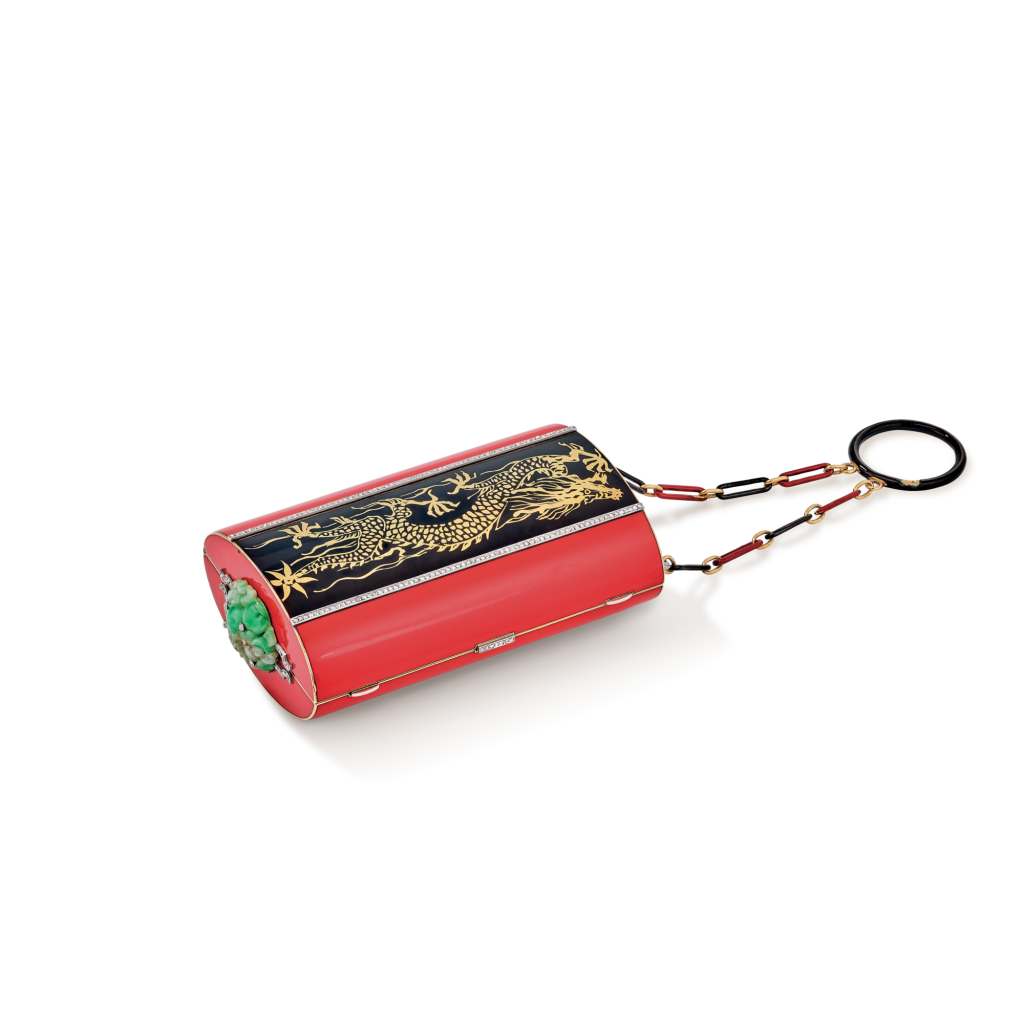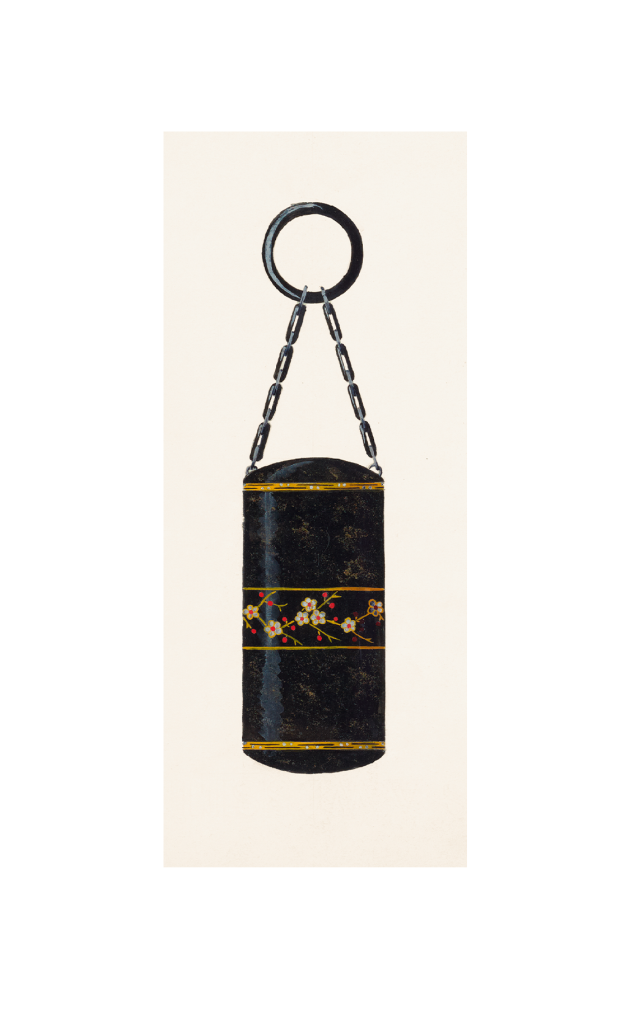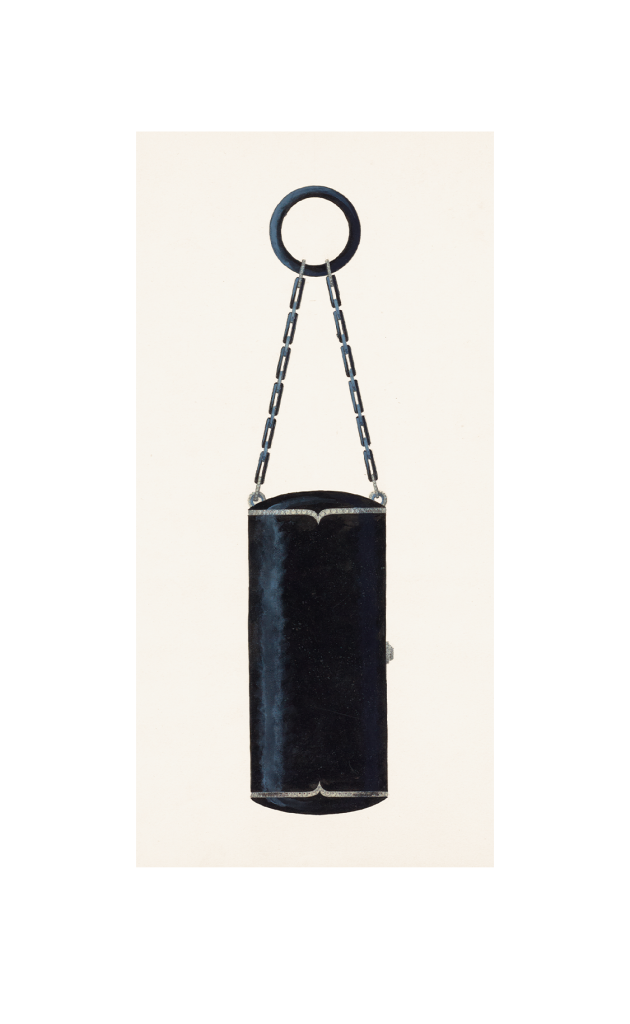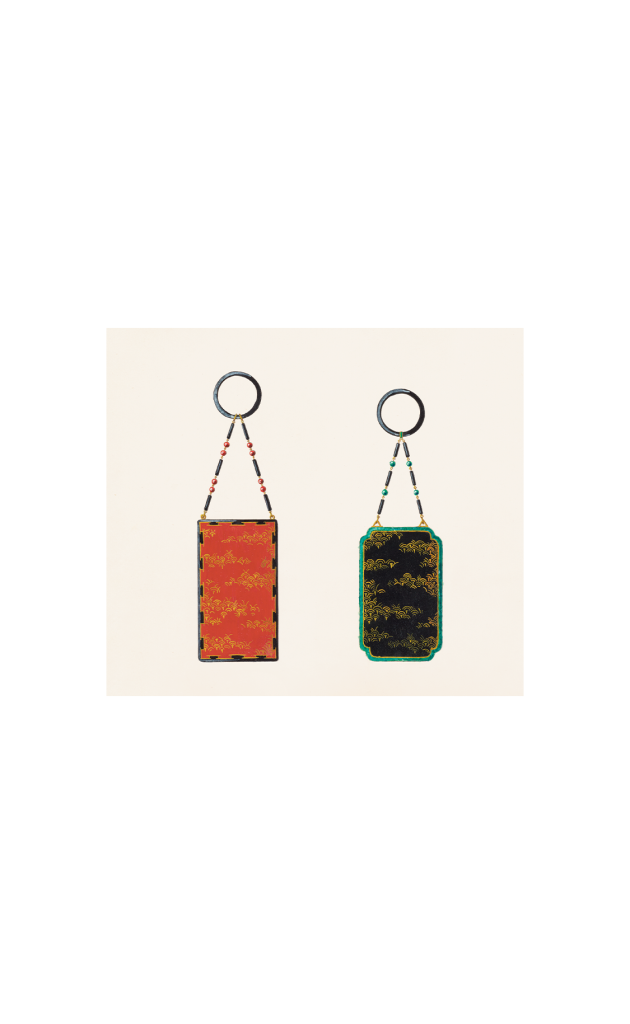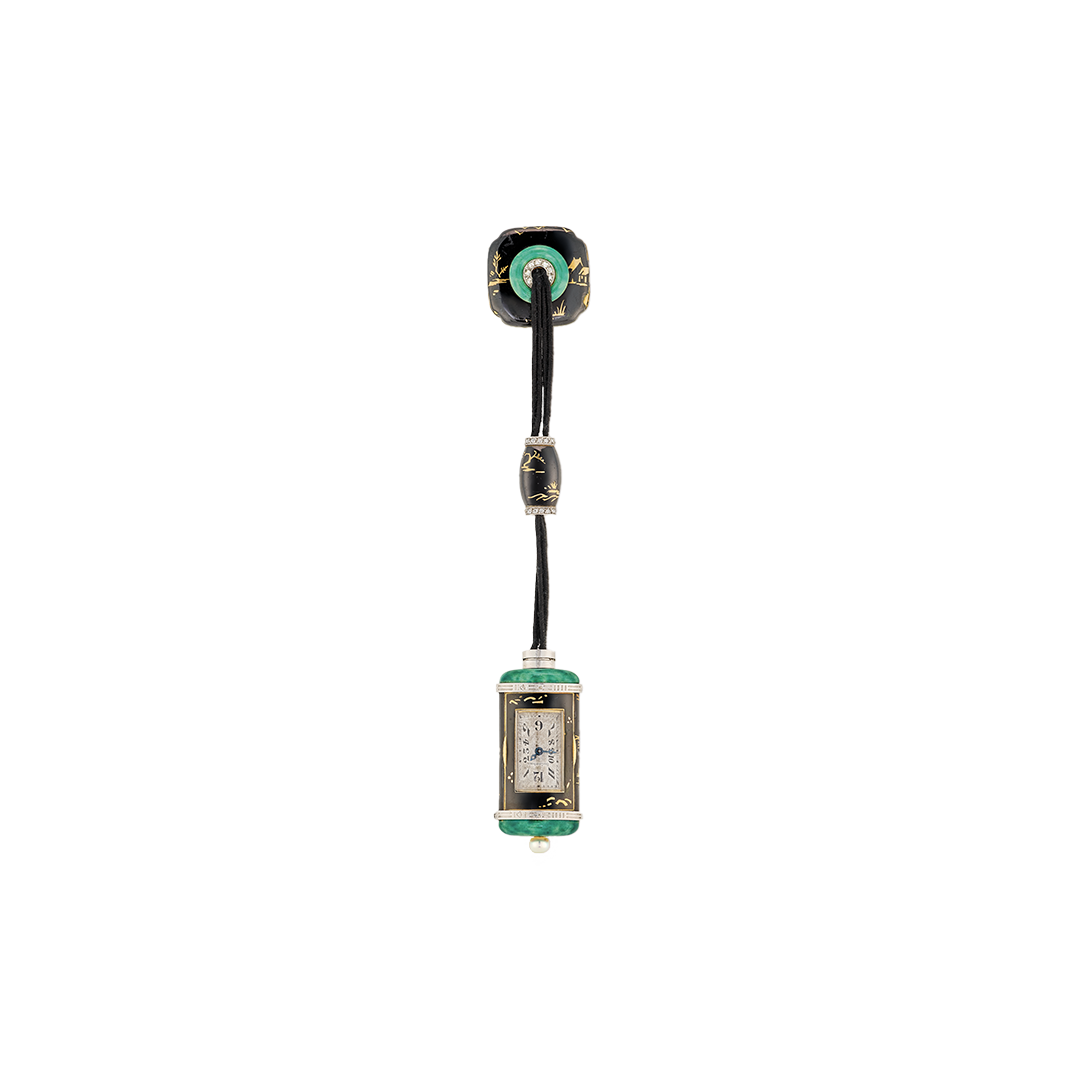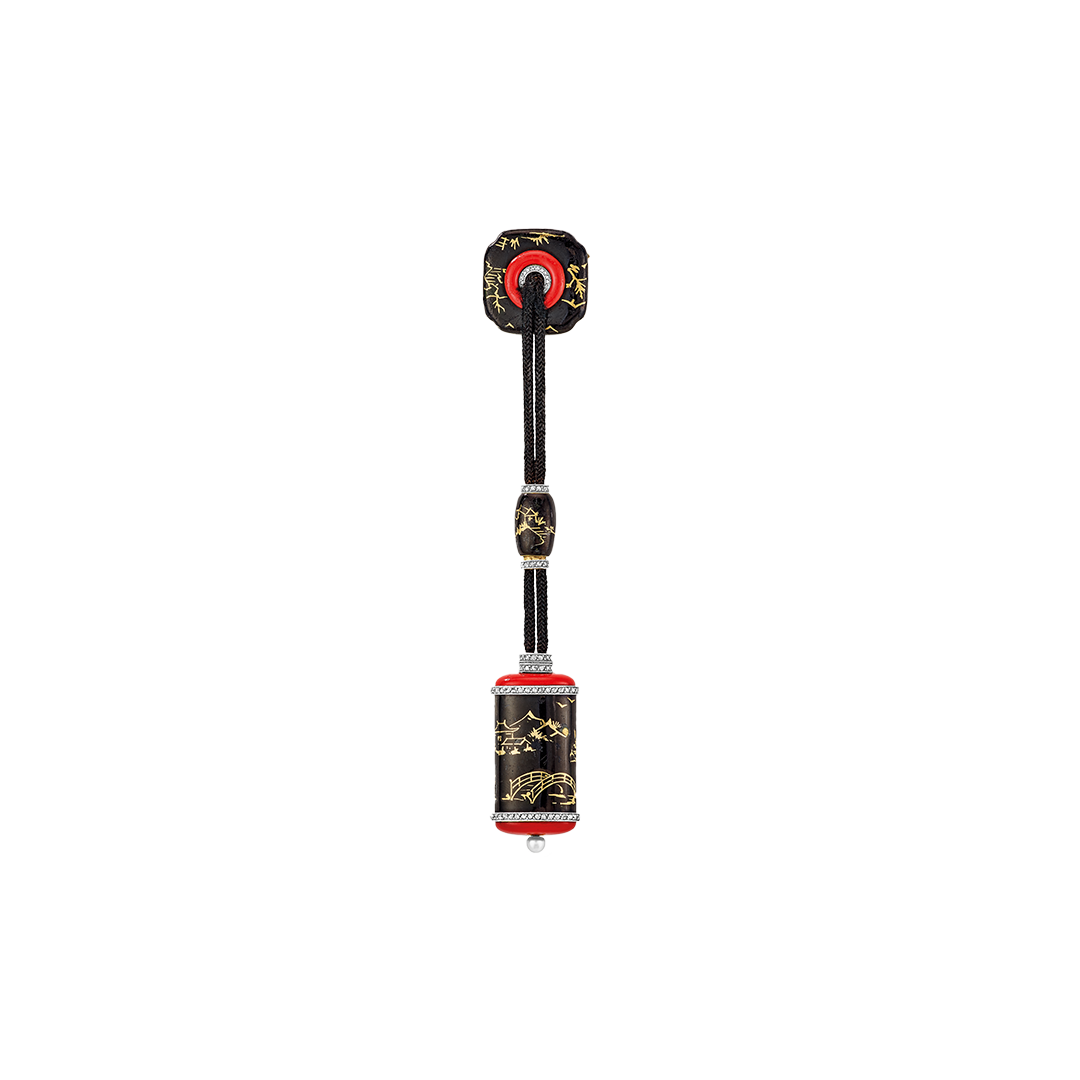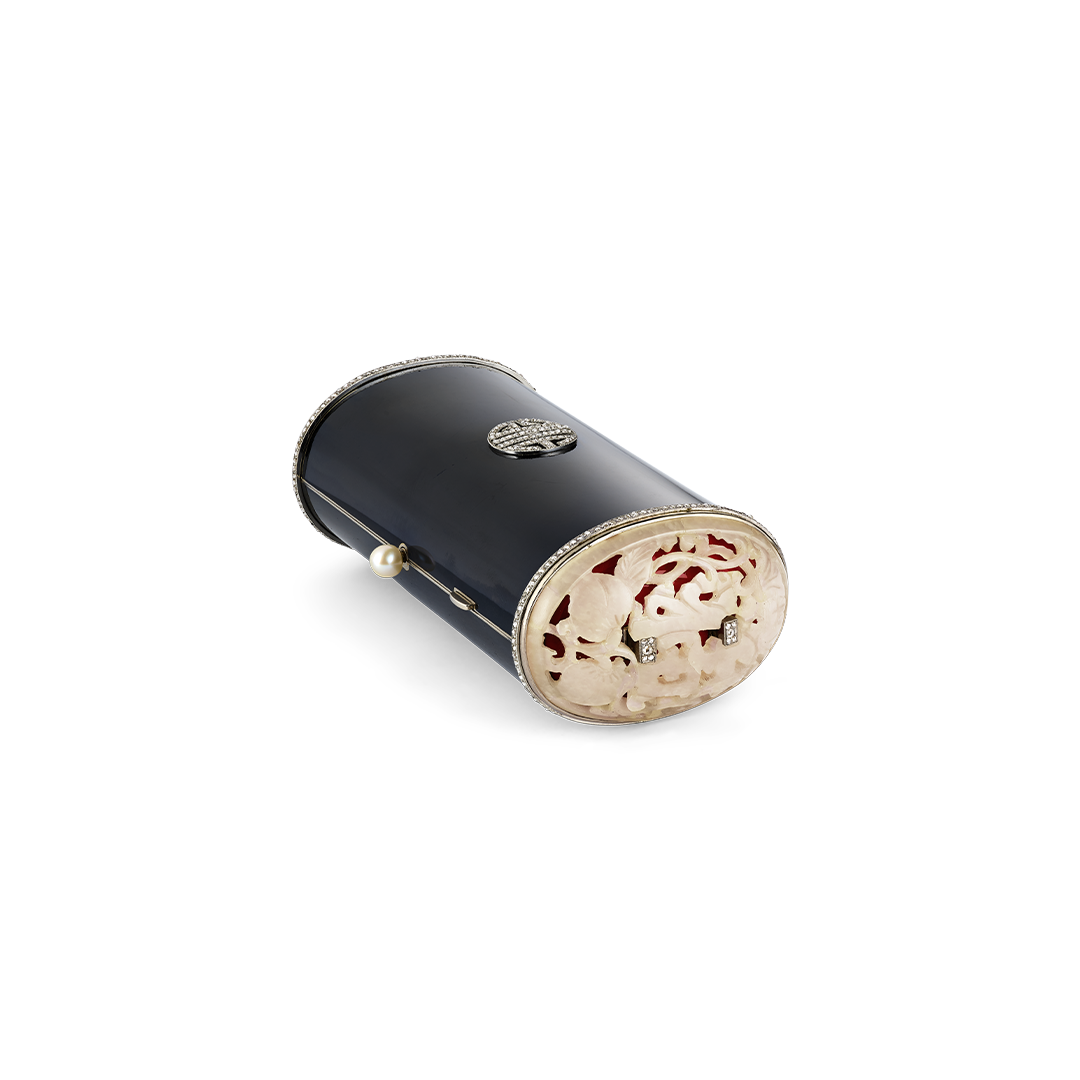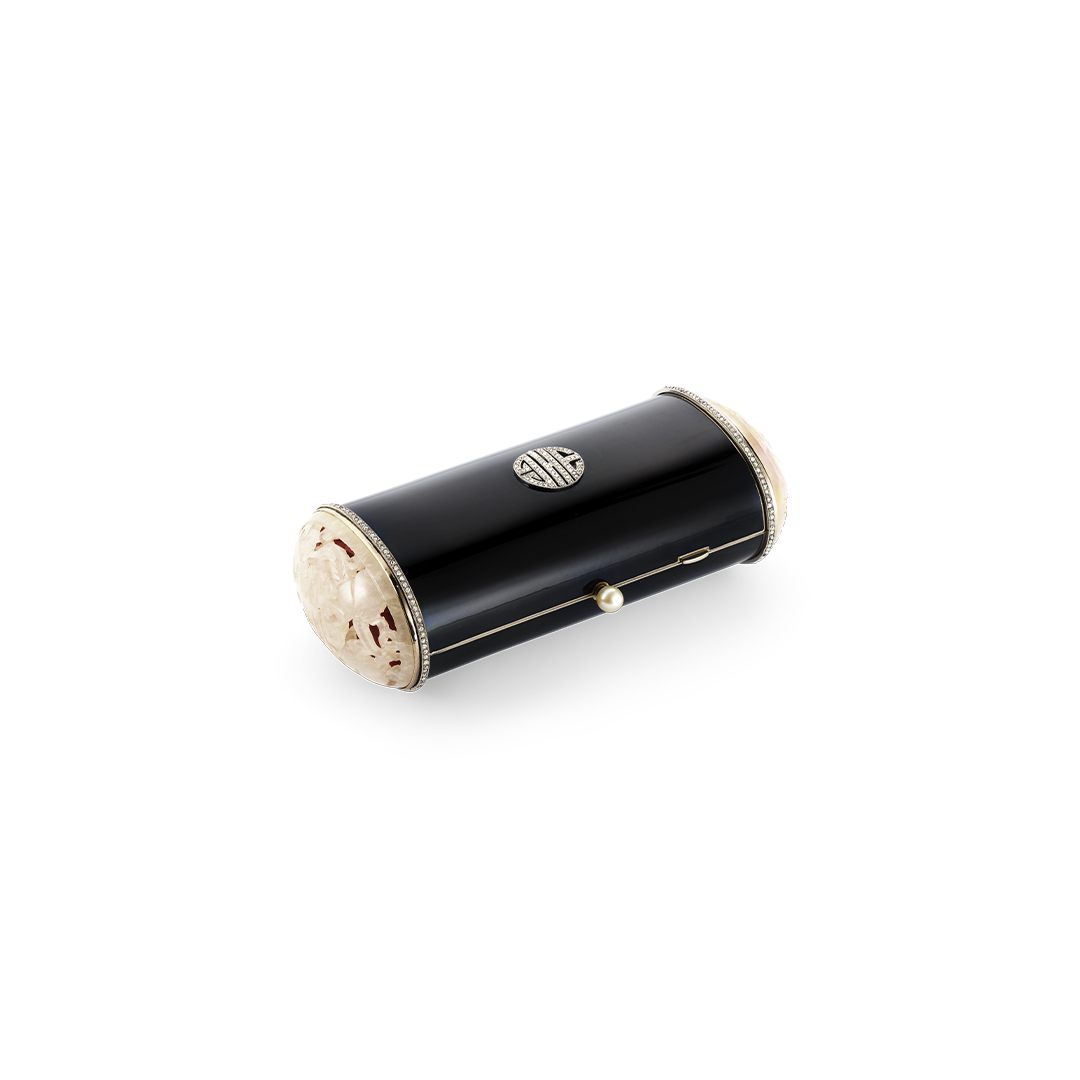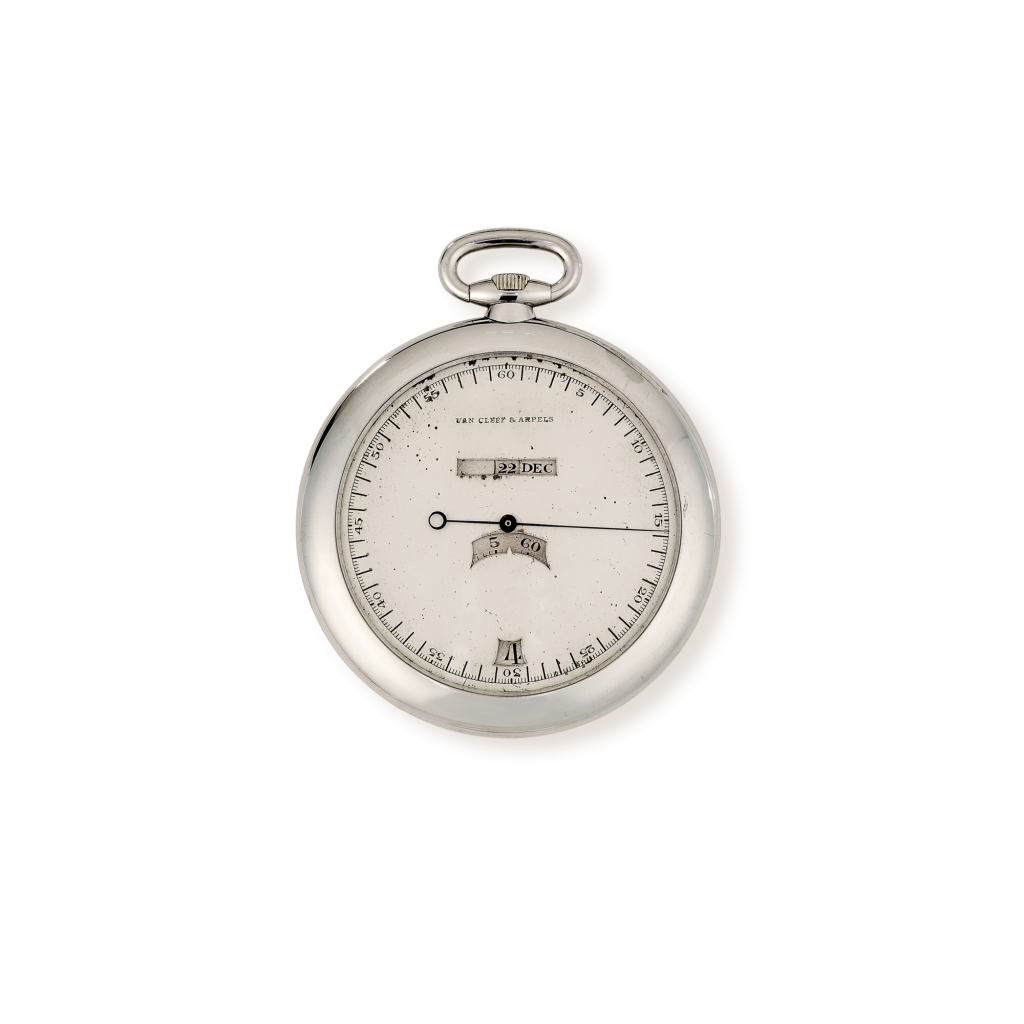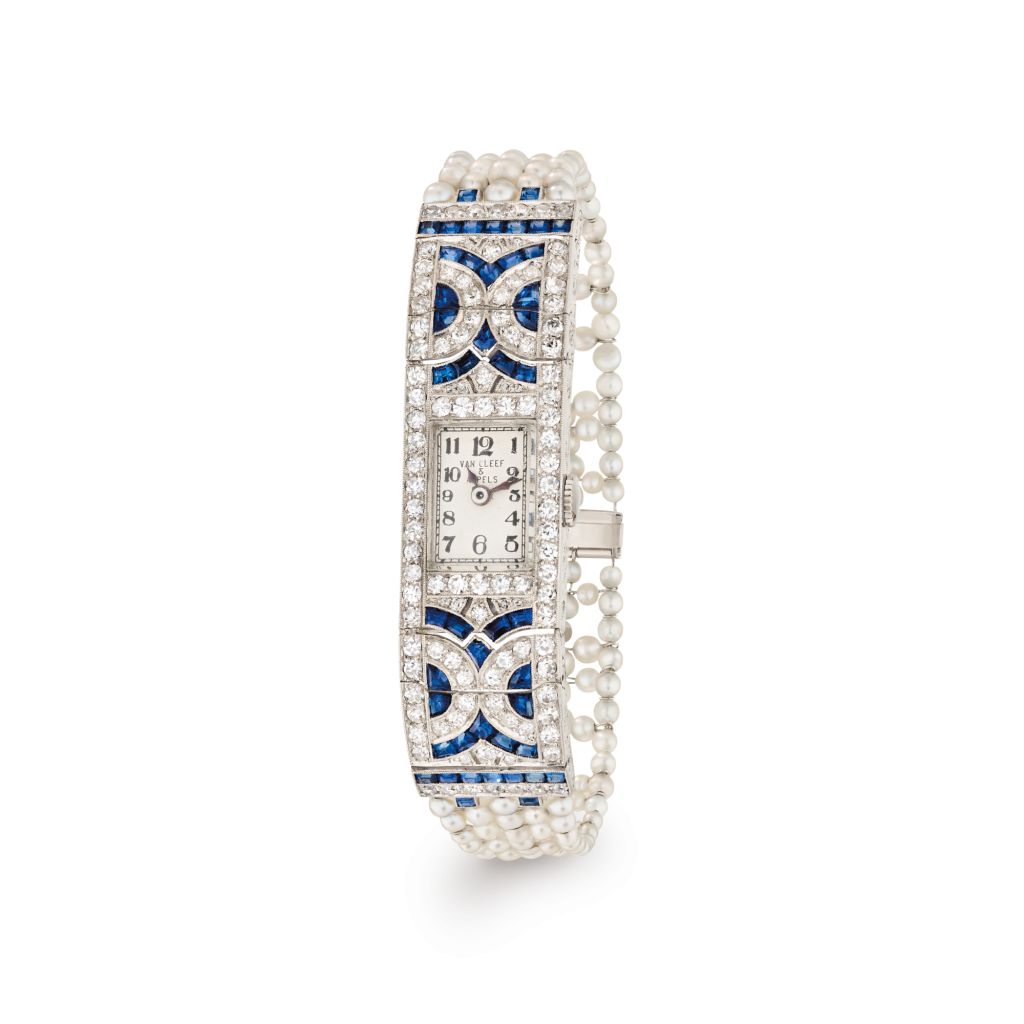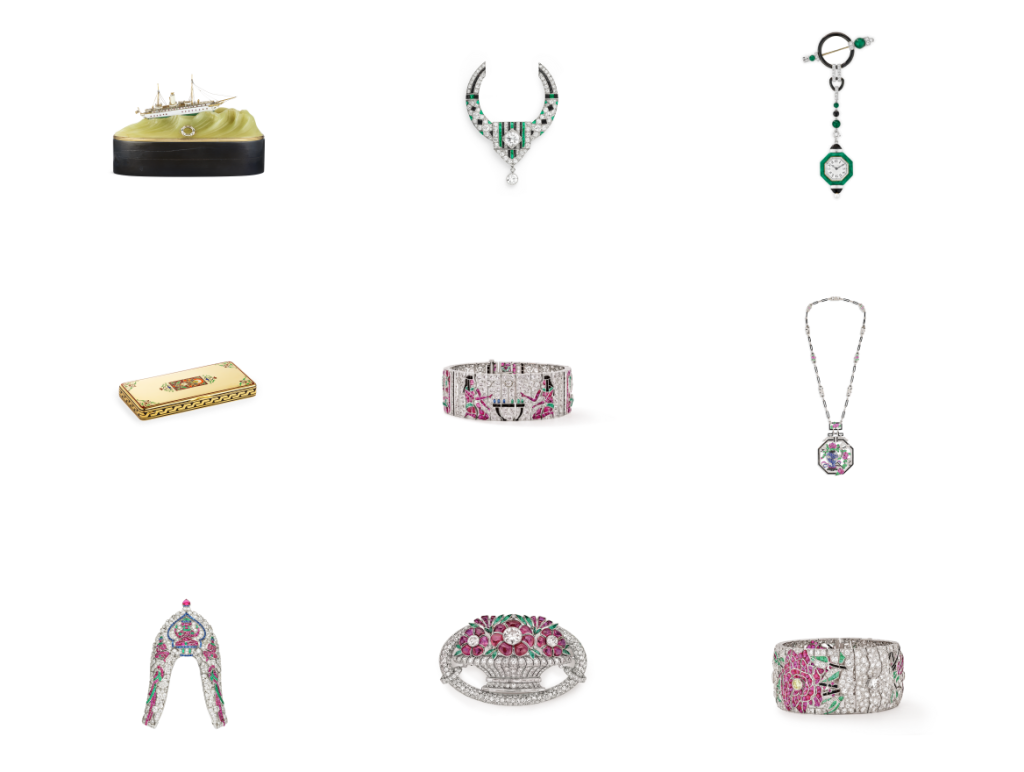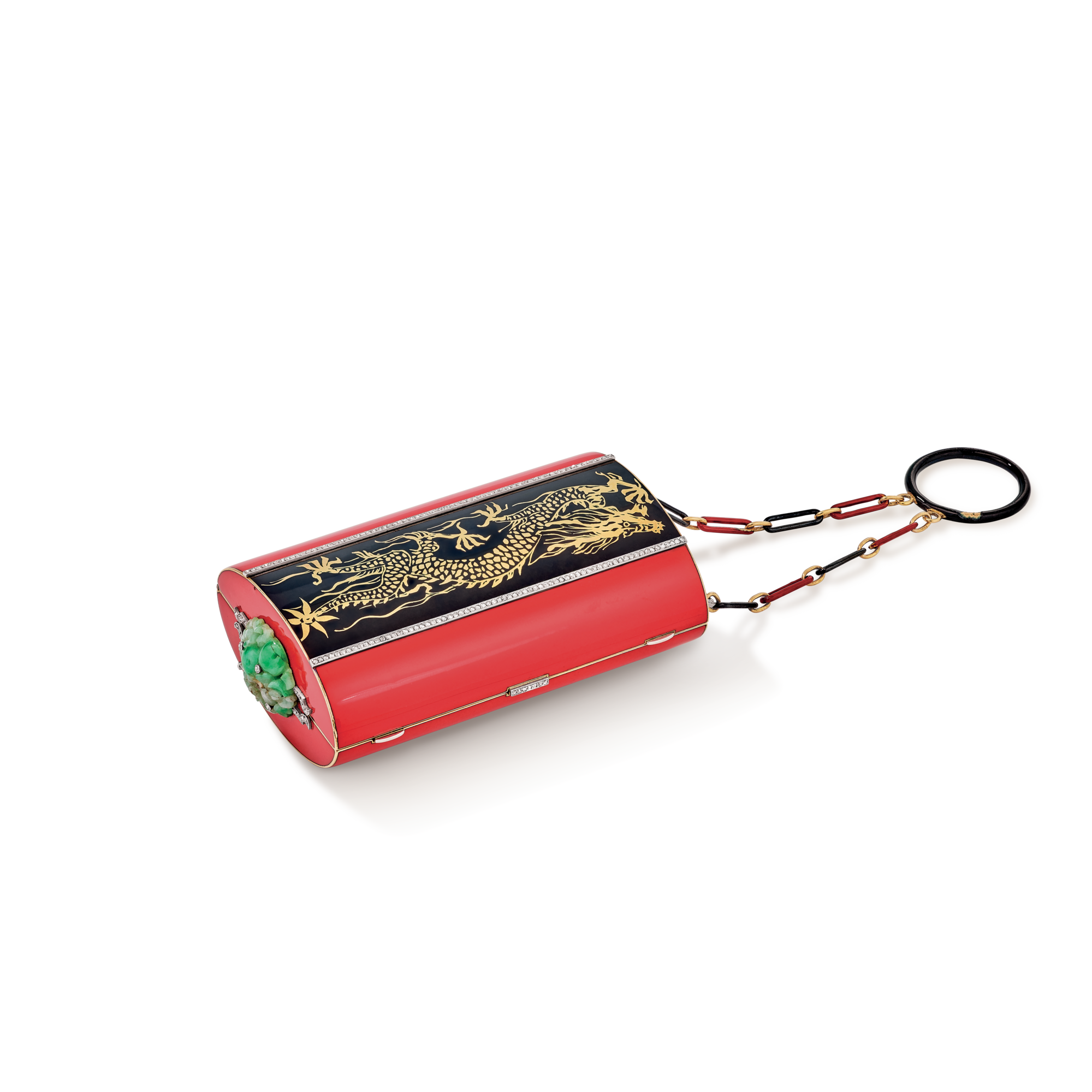
Nécessaire

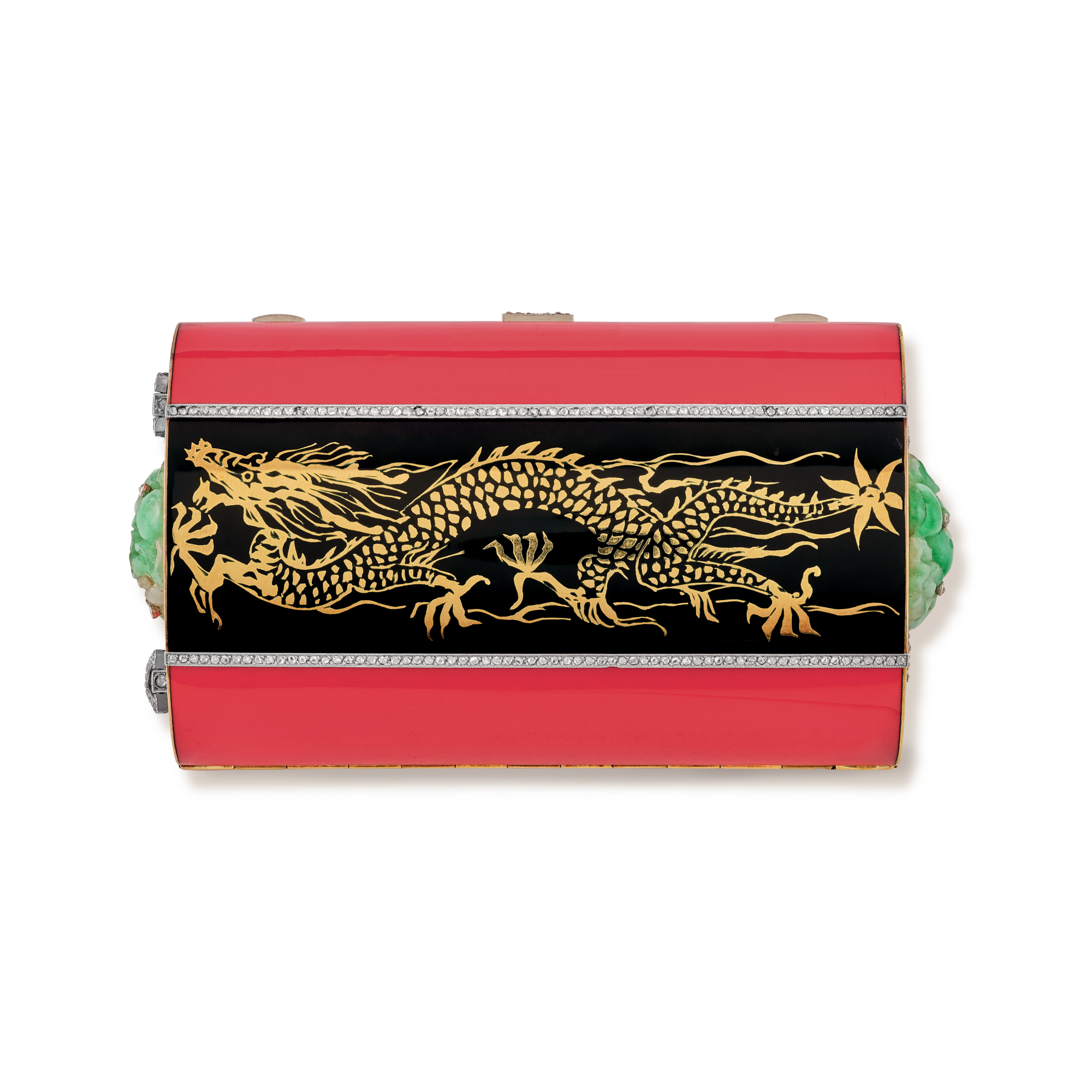
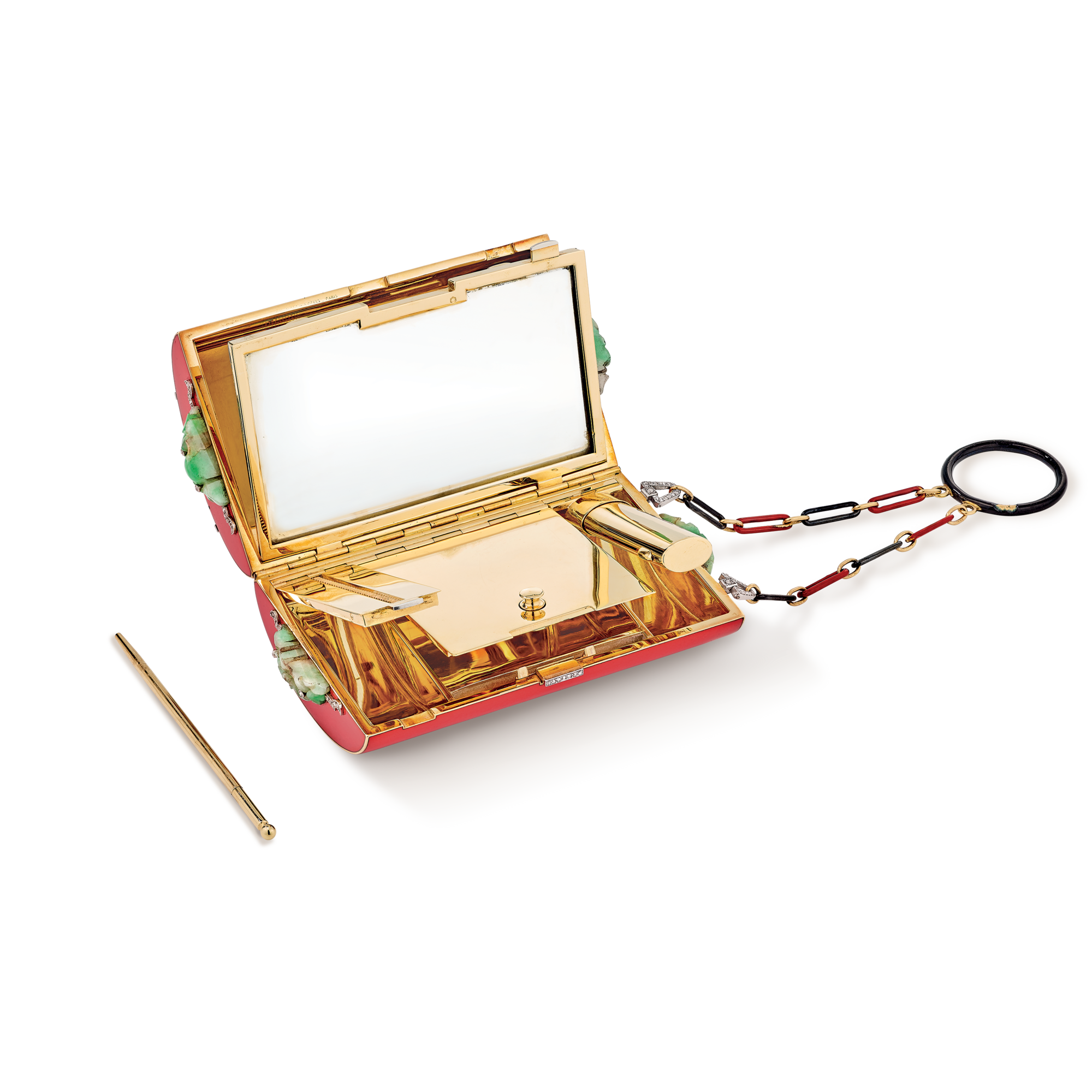
Creation details
- Creation year 1923
- Stone Diamond
- Stone Jade
- Material Gold
- Usage Minaudière
- Dimensions 105 × 55 × 33 mm
The so-called “dragon” nécessaire, decorated with motifs taken from the repertory of Far-Eastern art, illustrates the cultural exchange that existed between East and West during the first decades of the twentieth century.
It is composed of a cylinder of yellow gold covered in red enamel, opening from the side, its lid bearing a cartouche edged with two rows of brilliants framing a Chinese dragon in yellow gold against a background of black enamel. This motif refers to Chinese and Japanese lacquerwork. The nécessaire’s handle is made of a succession of yellow gold and black and red enamel links, ending with a black enamel circle. The handle is joined to the box by two platinum jump rings set with rose-cut diamonds on either side of the clasp, itself dissimulated by a sculpted jade motif.
The influence of the Far East
This piece is strongly inspired by the arts of the Far East, as seen in its motifs and materials. In addition to the dragon which evokes Chinese mythology, the shape of the nécessaire itself recalls Japanese inrō, those lavish small boxes originally worn by men suspended from their waist. Similarly, jade, which has been used in China since Neolithic times, is frequently associated in the collective imagination with Far Eastern production. Lastly, lacquerwork, here imitated using enamel, is historically considered to have been perfected by Chinese and Japanese artists.
DRAWINGS OF NÉCESSAIRES
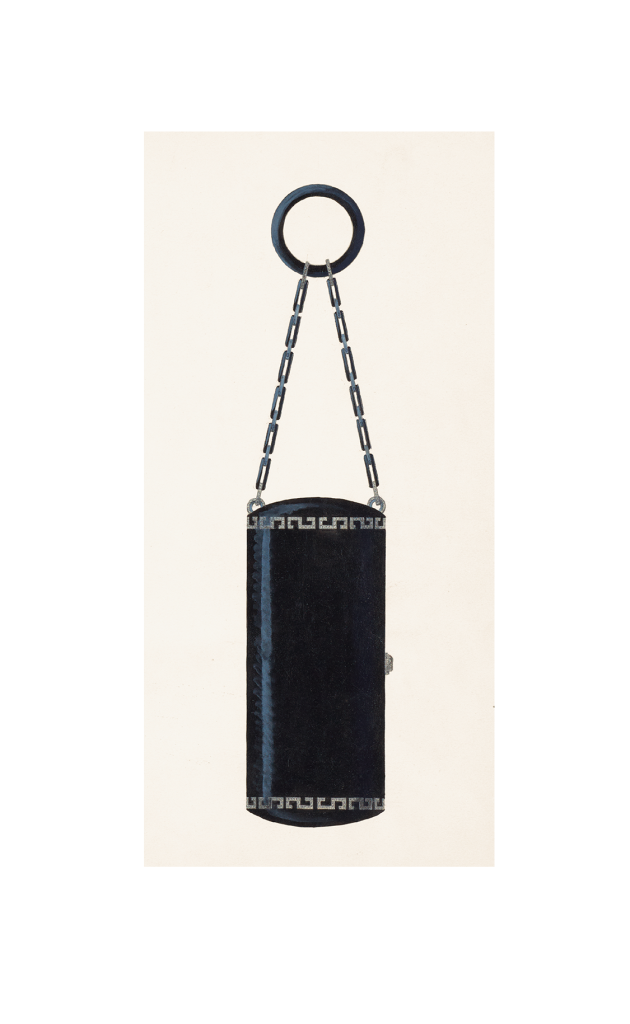
Serge Diaghilev’s Ballets Russes
This fascination for the Far East, boosted by the success of Diaghilev’s Ballets Russes and the fashion designs of Paul Poiret, was part of the Japonisme trend that emerged in the second half of the nineteenth century.
The role of the Expositions universelles
At that time, the Expositions universelles were one of the main ways of introducing the public in Europe to Asian culture. Furthermore, Chinese and Japanese delegations visited various European capitals, thereby enhancing reciprocal artistic exchange. Such was the case with Seizo Sugawara, a member of the Japanese delegation that came to Paris for the Exposition universelle in 1900. In the second decade of the twentieth century, it was he who introduced art deco decorators such as Jean Dunand and Eileen Gray to the basic techniques of lacquerwork.
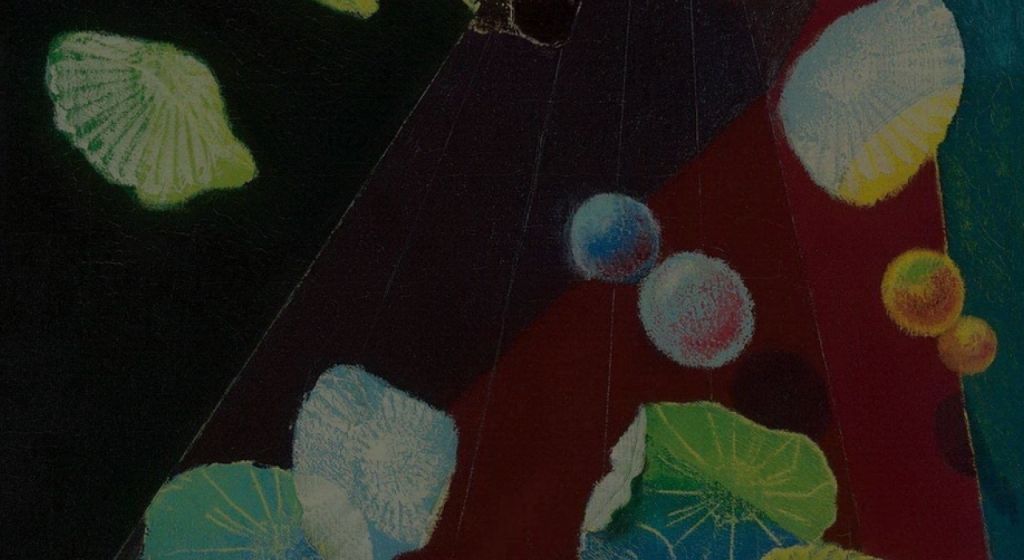
To go deeper
